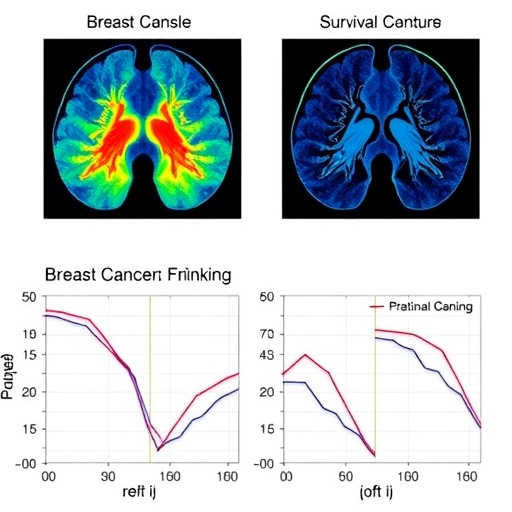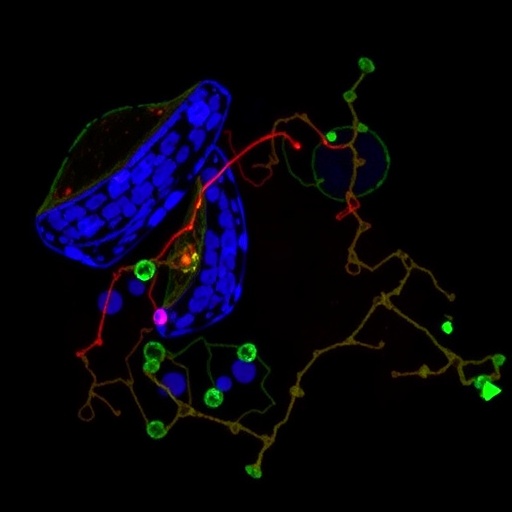While the need for solutions for the impending consequences of rising global temperatures has become increasingly urgent, many people have expressed concerns about the loss of jobs as current technologies like coal-fired power plants are phased out. A new study appearing November 1 in the journal Joule has run the numbers associated with the impacts of cutting coal plant jobs while at the same time employing techniques for bioenergy coupled with carbon capture and storage (BECCS). The model indicates that the BECCS approach would not only retain 40,000 jobs currently held as part of the coal industry but would create 22,000 new jobs in the forestry and transportation sectors by the middle of this century.
"In the ambitious attempt to limit global warming below 2°C, BECCS features as the dominant technology, yet it's been under considerable scrutiny for its unknown effects on the environment and society," says first author Piera Patrizio, a research scholar in Ecosystems Services and Management at the International Institute for Applied Systems Analysis in Laxenburg, Austria. "Our analysis shows that acting now and investing in this emission-mitigating strategy can be beneficial for employment in the U.S. coal sector."
BECCS is a proposed technology for reducing the release of greenhouse gases into the atmosphere. It combines carbon capture and storage, in which CO2 is collected from large emission sources such as power plants and injected into underground geologic formations, with the increased use of biomass, like plant-based materials, as a source of fuel. Proponents of BECCS predict that more than 99% of carbon dioxide stored through geologic sequestration is likely to stay in place for more than 1,000 years. They say this approach is necessary because the levels of CO2 that already have been released are too high to be absorbed by conventional carbon sinks like trees and soil alone.
In the new study, the researchers studied in detail the major processes and steps involved in the potential energy supply chains for the U.S. coal fleet. Specifically, they looked at the supply of sustainable forest resources for biomass and the design and cost of infrastructure for transporting and injecting CO2 into appropriate geologic sites.
"We also took into account the fact that biomass must be grown and harvested in a sustainable way in order to be considered carbon-neutral and thus obtain negative emissions," explains co-author Sabine Fuss, of the Mercator Research Institute on Global Commons and Climate Change in Berlin. "This aspect is sometimes neglected in studies dealing with BECCS deployment."
The investigators used a number of different models to analyze existing data, including a biophysical model called the Global Forest Model; a techno-economic model called BeWhere, which optimizes the technology development of U.S. coal, including feedstock logistics; and the Jobs and Economic Development Impact model, which they used to estimate the employment impacts of technology development.
There are some limitations to this type of analysis. For one thing, it does not consider the potential substitution of coal with other low-carbon options like renewables; thus, it reflects a limited picture of the future economy. For another, the models don't include any equilibrium in the economy, but are a bottom-up supply-chain optimization for specific technologies. Depending on these issues, outcomes of employing BECCS could differ with regard to job creation. Further analysis could therefore focus on emphasizing the socioeconomic effects of substituting renewable technologies for existing fossil-based capacity or on detecting larger, macroeconomic effects of low-carbon technology deployment, the researchers say.
"To increase the acceptance of mitigation actions, policymakers should embrace strategies that offer other societal benefits, such as jobs," concludes co-author Kasparas Spokas from Princeton University. "The U.S. represents a very interesting case to test our approach given the current economic, political, and environmental situation. This study shows how investing in climate change mitigation could actually ease the transition for coal workers, who would otherwise be confronted with abrupt job losses due to the retirement of the coal fleet by 2050."
###
This research was funded by the IIASA postdoc program, the Natural Environment Research Council of the UK, the Swedish Research Council Formas, and IIASA's Tropical Futures Initiative. It was also supported by the RESTORE+ project, which is part of the International Climate Initiative (IKI), supported by the Federal Ministry for the Environment; Nature Conservation and Nuclear Safety (BMU) based on a decision adopted by the German Bundestag.
Joule, Patrizio et al. "Reducing US coal emissions can boost employment." https://www.cell.com/joule/fulltext/S2542-4351(18)30466-5
Joule (@Joule_CP) published monthly by Cell Press, is a new home for outstanding and insightful research, analysis, and ideas addressing the need for more sustainable energy. A sister journal to Cell, Joule spans all scales of energy research, from fundamental laboratory research into energy conversion and storage up to impactful analysis at the global level. Visit: http://www.cell.com/joule. To receive Cell Press media alerts, contact [email protected].
Media Contact
Carly Britton
[email protected]
617-335-6270
@CellPressNews
http://www.cellpress.com
http://dx.doi.org/10.1016/j.joule.2018.10.004




